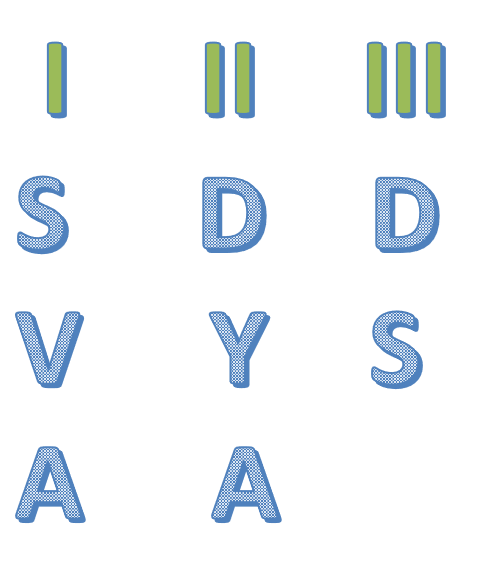Comparison and Ranking
Ranking involves comparing and sequential ordering of two or more persons/things based on parameters such as age, height, marks, salary, weight, length, size etc.
Questions based on ranking are generally given with a set of information in jumbled form.
Data Representation for Ranking Puzzles
You cannot afford to waste your time in exam by reading the given statements again and again. What we should do, is to represent that information in some manner that is easier to read and compare.
There are a couple of ways to do so.
Data Representation Method I
We compare the things, objects and persons using various notations such as greater than (>), smaller than (<), equal to (=), greater than or equal to (≥) , less than or equal to (≤) etc.
For example:
A is Greater/Heavier/Taller/Higher/More than B:
A > BA is Smaller/Lighter/Shorter/Lower/Less than B:
A < B
Ascending and Descending order Sequence:
A < B < C < D (Ascending order Sequence)
A > B > C > D (Descending order Sequence)
Data Representation Method II
Instead of less than and greater than sign, we can use the following method to represent the same information (A > B > C > D):

The higher the object/people, the Greater/Heavier/Taller it will be. In my opinion, this form of data representation is easier on the eyes and reduces our chances of committing an error in the exam. This is what I used to do in exams, and it increased my speed, as well as accuracy.
Now, let us consider the steps that we are supposed to take to solve such Comparison and Ranking puzzles.
Steps for solving Ranking Puzzles
- Step I: Find the number of persons/objects involved. More the people, greater the difficulty level.
- Step II: Use the various statements to rank the persons/objects mentioned in those statements. Use acronyms of the names to save time.
- Step III: Combine the information derived from various statements by using the link information.
Let’s consider an example, and see our theory in action.
Q. Vishal is elder than Aakash but younger than Subhi, Yaksh is younger than Deepak but elder than Aakash. If Subhi is younger than Deepak, then who is the eldest?
(a) Aakash (b) Vishal (c) Subhi (d) Deepak
Explanation:
Step I
Number of persons: 5
Step II: Use the various statements to rank the persons/objects
We will use acronyms of the names to save time.
Vishal is elder than Aakash but younger than Subhi. … I
Yaksh is younger than Deepak but elder than Aakash. … II
Subhi is younger than Deepak. … III

Step III: Combine the information derived from various statements by using the link information
We can see in the above figure, that D and S are the common links.
Using statements II and III, we can see that S is younger than D.
Now, using statement I, we can see that V is younger than S, and hence than D too.
So, D is the eldest of them all.